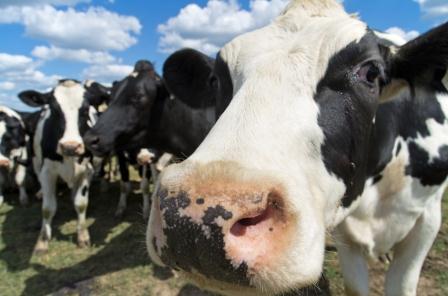The labelling of foodstuffs is governed at EU level by Directive 2000/13/EC regarding the indication of the ingredients present in foodstuffs, that was amended on25 November 2003by Directive 2003/89/EC which introduced the concept of “allergen labelling”.
Annex IIIa of the new Directive contains a list of ingredients known to cause hypersensitivity, which must always be labelled with an indication of their botanical origin, without any exemption. This list includes a.o. “cereals containing gluten and products thereof”.
The Directive would have made the indication of the wheat origin mandatory on food labels for all starch derivatives (maltodextrin, glucose syrups, dextrose) obtained from wheat, and all the products derived from them (sorbitol and sorbitol syrup, mannitol, maltitol and maltitol syrup, xylitol, caramel colour etc), if it not also provided that ingredients for which it has been scientifically established that they do not cause adverse reactions can be deleted from the list of products that always have to be specifically labelled. Products that are not likely to trigger adverse reactions, and for which the potential to trigger adverse reactions is under study, can be provisionally exempted from specific labelling according to the following procedure :
1) Studies conducted in order to establish which of the ingredients listed in Annex IIIa are not likely, under specific circumstances, to trigger adverse reactions can be notified to the Commission until25 August 2004.
2) The Commission, after consultation with the European Food Safety Authority (EFSA), will adopt, before25 November 2004, a list of ingredients and substances that are provisionally exempted from specific allergen labelling.
3) Based on the results of the studies notified to the Commission, a decision will be made on the permanent exemption from specific labelling before25 November 2007at the latest.
The companies members of the AAC believe that wheat starch derivatives can be safely consumed by people sensitive to the gluten protein, and that labelling of the wheat origin of starch derivatives would unnecessarily limit the range of foods that are available today for these consumers.
For this reason, the AAC started to build a scientific file for evaluation by the EFSA, in order to obtain final exemption from specific labelling of wheat starch derivatives.
The AAC will notify the Commission of the studies currently being conducted before25 August 2004, in line with the provisions of the proposed Directive. The AAC is confident that it will be able to demonstrate with scientific evidence that specific labelling of wheat starch derivatives is not justified, and as a result obtain that they be permanently exempted from the list of Annex III.
Member States will have to transpose the new Directive into national legislation by25 November 2004. This will coincide with the time when the Commission will publish the list of products that are provisionally exempted from specific labelling.
[list style="arrow"]
- The AAC is confident that after it has notified its studies to the commission, wheat starch derivatives will be provisionally exempted from the allergen labelling requirement.[spacer size="15"]
- Based on available informed scientific opinion, the AAC is also confident that wheat starch derivatives present no risk of adverse reaction, and will be permanently excluded from the allergen labelling requirement in 2007.
[/list]
____________________________________________________________
Facts and Figures[spacer size="15"]
- Wheat starch in general complies with the specification of the current Codex Standard for Gluten-Free Foods of maximum 0.05 % N/ds (Codex Stan 118-1981) or 0.3 % (3000 ppm) protein (Nx6,25). However, only about a third of the N in wheat starch is protein-N, corresponding to about 1000 ppm real protein, and the main part of the protein is non-gluten protein. The AAC is confident that a substantial part of the wheat starch produced will comply with a maximum gluten content of 200 ppm/ds, as suggested for the definition of “gluten-free foods” in the ongoing discussion for the revision of the Codex standard for gluten-free foods.[spacer size="15"]
- Wheat starch derivatives (maltodextrins, glucose syrups and dextrose) undergo a manufacturing process that includes additional extensive refining, leading to the removal of the majority of proteins. As in the case of starch, it has been shown that the main part of the N present in wheat starch derivatives is non-protein N. The real protein content is <100 ppm, which is the limit of detection for protein determination on these products. Further characterization of the residual proteins in wheat starch derivatives is on-going in order to evaluate the residual presence -if any- of gluten protein, and their residual potential to provoke adverse reactions to people sensitive to gluten.[spacer size="15"]
These preliminary results give an indication of the low level of protein and potentially gluten protein in wheat starch derivatives. The on-going analytical studies will allow the industry to gain a better understanding of these facts.
____________________________________________________________
Calendar[spacer size="15"]
25 November 2003 : publication of Directive 2003/89/EC in the EC Official Journal.
25 August 2004 : deadline for notifying on-going scientific studies.The AAC will notify the studies it is currently carrying out.
25 November 2004 : deadline for the Commission to publish the list of derived products that are provisionally exempted from allergen labelling. The companies members of the AAC will inform their customers on whether wheat starch derivatives are included in this list. This would exempt them from allergen labelling until 25 November 2007.
25 November 2004 : Member States permit the sales of products that comply with the Directive.
25 November 2005 : Member States prohibit products that do not comply with this Directive. It will, however, be possible to sell products that do not comply with this Directive but have been placed on the market or labelled prior to this date until stocks are fully utilised.
25 November 2007 : deadline for the Commission to publish the list of derived products exempted from the allergen labelling requirements. The AAC members will inform their customers on whether wheat starch derivatives are included in this list, which would mean that they are permanently exempted from allergen labelling.
____________________________________________________________
What about the labelling of wheat starch and wheat proteins?[spacer size="15"]
Wheat starches
Starches with ingredients status, when derived from wheat, always have to be labelled “wheat starch”, as is currently the case.
Modified wheat starches
Modified starches with additive status, when derived from wheat, always have to be labelled “modified wheat starches”, as is currently the case.
Wheat proteins
Proteins, when derived from wheat, will always have to be labelled “wheat proteins”.
Carry-over additives, processing aids, and carriers derived from wheat
For those that will not be exempted by the Commission, carry-over additives (e.g. starch sodium octenyl succinate E 1450 used as encapsulating agent in flavours) processing aids and carriers of additives or flavours will always have to be mentioned in the list of ingredients with indication of their wheat origin, as if they were ingredients.

